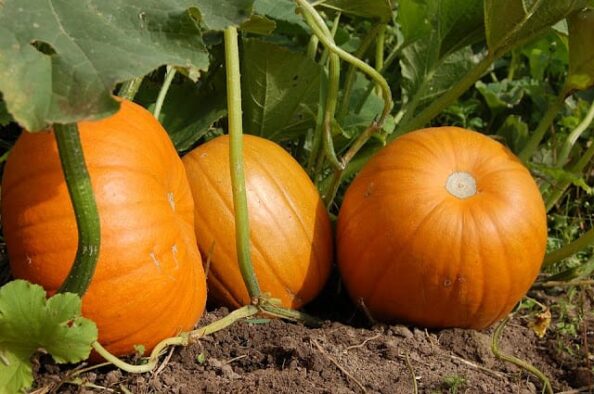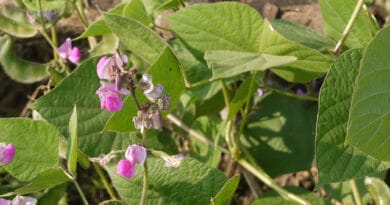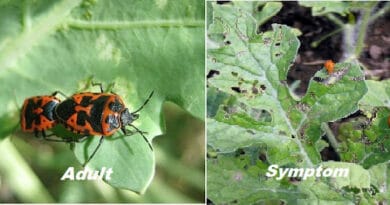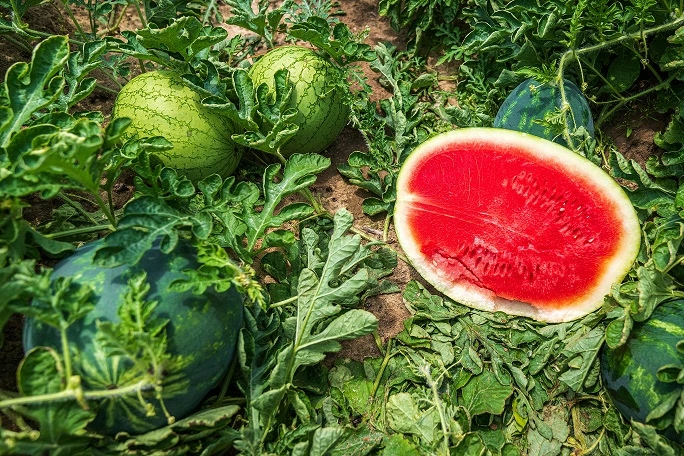Cultivation of Pumpkin
Cultivation of Pumpkin: The most popular rainy-season vegetable crops
Pumpkin (Cucurbita moschata Poir.) Pumpkin is one of the most important cucurbitaceous vegetable crops. It is one of the most popular rainy-season vegetable crops in India.
Although they can climb when there are supports, pumpkin plants are resilient creepers or soil surface runners. The fruits differ in size, color, and form. Pumpkins can be bred from pure lines as they are monoecious.
Pumpkins are grown for their ripe fruit, which is consumed for its yellow or orange flesh and seeds in the center cavity. Beta-carotene, an essential antioxidant found in pumpkin, is transformed by the body into vitamin A. Pumpkin has numerous vital roles in overall health during its conversion to vitamin A. According to research, pumpkin seeds offer special health and nutritional advantages.
India ranks second after China in pumpkin production. The ripe pumpkin is used as cooked. It is one of the main vegetables in any festival. It is round or long in shape.
The word pumpkin originates from the word “Pepon,” a Greek word for the large melons. Pumpkin is a native of tropical America and has been in cultivation since prehistoric times. (7500 – 5000 BC)
Local Names of Pumpkin in India:
- Gummadi Kaya in Telugu
- Poosanikai in Tamil
- Kumbalakai in Kannada
- Mathanga in Malayalam
- Lal bhopala in Marathi,
- Kaddu in Hindi,
- Kollaano Velo in Gujrati
Nutritional Value of Pumpkin:
The nutritive value of the 100 g portion of pumpkin is as follows:
| Serving Size: 100 g | %DV | |
| Calories | 28 kcal | |
| Total Carbohydrate | 7 g | 2% |
| Dietary Fiber | 0.5 g | 4.00% |
| Sugar | 2.8 g | |
| Protein | 1 g | 2% |
| Cholesterol | 0 | 0% |
| Saturated fat | 0 | 0% |
| Sodium | 1 mg | 0% |
| Potassium | 340 mg | 9% |
| Iron | 4% | |
| Calcium | 2% | |
| Vitamin D | 0% | |
| Cobalamin | 0% | |
| *Percent Daily Values are based on a 2,000-calorie diet. Your daily values may be higher or lower depending on your calorie needs. | ||
Climate Requirements for Pumpkin Cultivation
Diseases like mildew are less common in areas with low humidity. Development is delayed and blossoming is negatively impacted by heavy rain. Pumpkins thrive on soil that has a high content of organic debris, is easily drained, and has a good capacity to retain moisture.
Soil & its Preparation for Pumpkin Cultivation
Most Popular Varieties of Pumpkin:
Variety | Characteristics |
Arka Suryamukhi | A high-yielding variety released from the Indian Institute of Horticultural Research, Bangalore. Small-sized, flat-round fruits with an orange color. Resistant to fruit fly attack. Suitable for growing in Kerala conditions during September-January. |
Arka Chandan | A pure line selection was released from the Indian Institute of Horticultural Research, Bangalore. Fruits are round with pressed blossom ends. Rind color is green with white patches when immature, which turns to light brown upon maturity. Fruits have thick orange flesh, and rich in carotene, and have a solid cavity. Fruit weight is 2-3 kg. The average yield is 33 t/ha. Crop duration is 115-120 days. |
Ambili | High-yielding variety released from the Kerala Agricultural University. The average fruit weight is 4-6 kg. Medium-sized, flat round fruits |
Saras | A medium-sized pumpkin variety with attractive flesh color and more flesh content, released from Kerala Agricultural University. The average yield is 39 t/ha. |
Suvarna | High-yielding variety released from KAU. Small-sized flat round fruit with thick orange flesh. The average weight of fruit is about 3- 4 kgs |
Sowing of the seed of Pumpkin ;
(b) Seed rate. The seed rate per acre is 2.5-3.0 kg.
(c) Method of sowing. The seeds are sown by a dibbling method at a spacing of 1.5 meters x 75 cm. Generally, three to four seeds are sown in a pit at 2.5 to 3.0 cm.
Manuring in Pumpkin Crop;
Intercultural Operations in the Pumpkin Crop;
One or two weddings may be done during the early stages of growth.
Irrigation in the Pumpkin Crop;
No irrigation is given to the rainy season crop. The summer season crop should be irrigated after every third or fourth day
Pests and Diseases of Pumpkin;
Pest | Symptoms | Control |
Fruit flies | The fruit fly is the most destructive insect pest of pumpkin. Fruit fly maggots feed on the internal tissues of the fruit causing premature fruit drop and also yellowing and rotting of the affected fruits. This fly is difficult to control because its maggots feed inside the fruits, protected from direct contact with insecticides.
| Bury any infested fruits to prevent the buildup of the fruit fly population. In homestead gardens, covering the fruits in polythene/paper covers help to prevent flies from laying eggs inside the fruits. Breaking of soil to expose pupae, and burning the soil in the pit with dried leaves are also effective. It can also be effectively controlled by the use of banana fruit traps. |
Epilachna beetle | The yellowish-colored grubs and adults of the beetle feed voraciously on leaves and tender plant parts and the leaves are completely skeletonized, leaving only a network of veins. When in large numbers, the pest causes serious defoliation and reduces yield.
| Remove and destroy egg masses, grubs, and adults occurring on leaves. Spray carbaryl 0.2%.
|
Pumpkin beetle | Adult beetles eat the leaves, make holes in foliage, and cause damage to roots and leaves. Grubs cause damage by feeding on the root. It also feeds on flowers and bores into developing fruits that touch the soil.
| Incorporate carbaryl 10% DP in pits before sowing the seeds to destroy grubs and pupae. |
Aphids | Aphids in large numbers congregate on tender parts of the plant and suck sap resulting in curling and crinkling of leaves. Ants carry aphids from one plant to another. | First, dissolve soap in hot water and then make up the volume. Alternatively, apply dimethoate 0.05%. |
Disease | Symptoms | Control |
Downy mildew | Cottony white mycelial growth is seen on the leaf surface. Chlorotic specks can be seen on the upper surface of the leaves. It is severe during the rainy season.
| Complete removal and destruction of the affected leaves. Spraying 10% solution of neem or kiriyath preparation. If the disease incidence is severe, spraying mancozeb 0.2% will be useful.
|
Powdery mildew | The disease appears as small, round, whitish spots on leaves and stems. The spots enlarge and coalesce rapidly and white powdery mass appears on the upper leaf surface. Heavily infected leaves become yellow, and later become dry and brown. Extensive premature defoliation of the older leaves resulting in yield reduction.
| Control the disease by spraying Dinocap 0.05%. |
Mosaic(Cucumber Mosaic Virus) | Mosaic disease is characterized by vein clearing and chlorosis of leaves. The yellow network of veins is very conspicuous, and veins and veinlets are thickened. Growths of plants infected in the early stages remain stunted, and the yield of the plant get severely reduced. White fly (Bemisia tabaci) is the natural vector of this virus.
| Control the vectors by spraying dimethoate 0.05%. Uprooting and destruction of affected plants and collateral hosts should be done. |
Harvesting of Pumpkin Crop;
Yield of Pumpkin:
The yield may range from 6000 to 10,000 kg per acre.
Read More ;



